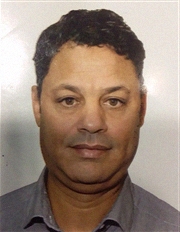Tutor HuntResources EFL Resources
Dyslexi In A Multilingual Context
Dyslexia in different languages
Date : 18/03/2013
Author Information

Uploaded by : Lahcen
Uploaded on : 18/03/2013
Subject : EFL
The overall assumption is that most researches carried out on Dyslexia are effectuated in English and most studied cases are English speaking learners with a Dyslexic syndrome. However, most recently, a great deal of studies about Dyslexia are done cross-linguistically. Looking at the developmental Dyslexic continuum in different languages generates a number of important themes. These themes vary in degree of importance from one language to the other. Hence, the importance of the linguistic features in each language determines the sort of difficulties encountered while learning that language. For Caravolas (1993), language-specific differences account for significant individual discrepancies in phonological awareness, in reading and spelling abilities. Nevertheless, because of the high process of borrowing and the historic influence of some languages over others, these themes become more and more common between all languages. Most studies in this respect agree on Dyslexic problems being ascribed to the phonological processing in most languages. Though some languages may resist this hypothesis, it is argued that most dyslexic learners would have phonological deficits when faced with more challenging tasks. Very few languages are to evade this fact. Interestingly, learning different languages is indeed a good criterion for Dyslexia assessment. Dyslexic learners usually have underlying phonological processing impairments. Some of their literacy skills are not most strongly affected in the one language. However, if the demand becomes higher on their phonological or orthographic processing, in the case of performing another language, more difficulties become evident and hidden deficits become apparent. Thus, it is not only a value-added idea to carry out studies on Dyslexia in a multilingual context but indeed a prerequisite towards formulating a better understanding of this continuum. Nata Goulandriss (2003) draws the attention to the fact that:
With the emergence of cross linguistic studies of Dyslexia, it has become
increasingly evident that it is essential to consider developmental Dyslexia
in terms of the specific language of instruction because the behavioural manifestations of the disorder cannot be identified without reference to the spoken and written language in use.
I would utterly agree with Goulandriss that different languages bear different linguistic features. Some languages have shallow orthographies; these don't pose major problems for their reading nor writing since the grapheme-phoneme correspondences are straightforward. For instance, the consistency of the orthography of Spanish, Italian and Greek makes it easy to read most written words. The transparent orthography of the Arabic language, especially its consonantal patterns, makes it accessible for readers to attack words with minimum difficulties. Nevertheless, opaque languages such as French, Danish or Polish have inconsistent orthographies that necessitate a great deal of decoding and encoding. It is evident thus to say that it must be essential for Dyslexia practitioners to take these facts as well as socio-pragmatic considerations into account while identifying, assessing and providing for Dyslexia in a multilingual context. It won't be feasible at all to apply findings done in a mono-lingual context on dyslexic learners with either a multilingual background or prospect.
This resource was uploaded by: Lahcen
